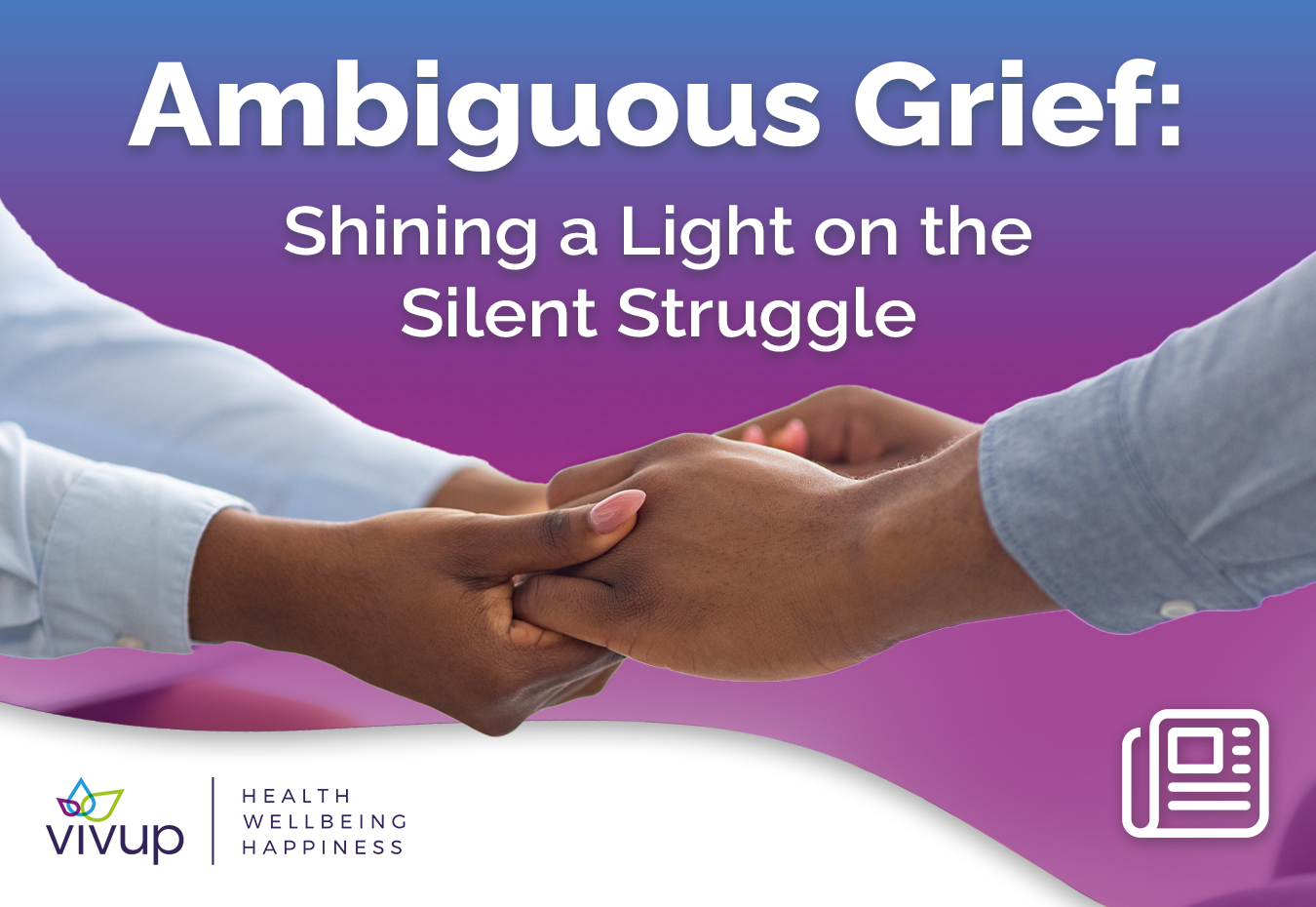Ambiguous Grief: Shining a Light on the Silent Struggle
Sinead Murphy
Aug 19, 2024 10:52:13 AM

Financial Wellbeing
Mental Wellbeing
Physical Wellbeing

Discover how to navigate the hidden world of ambiguous grief and its often-overlooked impact on personal and professional wellbeing
Traditional grief is often associated with the strong, tangible sense of loss we feel when a loved one passes away. However, grief isn’t just tied to death; it can arise from any significant loss or major life change.
This kind of loss is known as ambiguous grief. It’s an unresolved or indefinite sadness which is not directly associated with the physical death of a loved one. In simple terms, it’s a loss without closure.
Ambiguous grief can occur when a loved one is no longer there as they once were. This can happen when a relative is physically present but mentally absent (such as in cases of dementia), when someone is missing, when a relationship ends, or during a significant life transition.
We may also experience ambiguous grief after a traumatic injury, particularly if it leads to physical impairment. This is because we mourn the loss of our former selves, the life we once knew, and the independence we once had.
In all these cases, the loss is not definite. There is no ceremony to offer closure (like a funeral), making it difficult to move on and find peace. Because of this, the grieving process can be prolonged or unresolved.
Over half described their grief as ‘traumatic distress’
43% feel suicidal
50% feel they have lost their identity as a secondary loss
1/3 have little or no hope for the future
Ambiguous loss has two branches. Type 1 is associated with physical loss and psychological presence. This might happen when you don’t know where someone is or what’s happened to them, such as:
Type 1 is also categorised by knowing where someone is, but not feeling like they are physically present in your life anymore. This might occur during:
With Type 2, a person experiences psychological loss but physical presence. This could happen during a mental or emotional disappearance, such as:
Without closure, a person navigating ambiguous loss can experience a range of physical and emotional issues – including:
When dealing with the effects of ambiguous loss, it can be difficult to separate your emotional and personal life from your professional responsibilities. As such, employees may experience a range of knock-on effects, such as:
Decreased productivity, concentration and motivation
Health issues stemming from constant feelings of sadness, anxiety and frustration which can lead to absenteeism or presenteeism if not treated
Personal strain and impact to professional relationships, often leading to misunderstandings and conflict
If you or someone you know is struggling, here are some tips which can lead to positive progress:
Acknowledge the grief - Recognising ambiguous grief is the first step towards healing, so give yourself permission to feel and express your emotions
Reach out - Talking to friends, family, support groups, or a mental health professional can help you process feelings and find comfort
Create rituals - Rituals or memorials can help to acknowledge or honour a loss. This could include lighting a candle or keeping a journal
Practice self-care - Take part in activities which promote healthy wellbeing, such as exercise, meditation, relaxing hobbies, or anything that brings joy - even if its momentary
Set boundaries - If the cause of the ambiguous grief is still present, create boundaries to protect your emotional wellbeing. This could be limiting contact, unplugging from news sources, or taking time to focus fully on yourself
Seek professional support - Specialist therapists for grief and loss can offer tools and strategies to help you cope with these difficult feelings. Cognitive Behavioural Therapy, for example, can help you reframe negative thoughts and build resilience
Educate others - As an employer, you should educate your people to understand this form of grief. Encourage open conversations to create a more supportive working environment, and connect staff to resources if they’re struggling
Despite the challenging nature of ambiguous grief, it is often overlooked when we think about mourning. However, it requires the same level of understanding and compassion - especially in the workplace.
By recognising the impact and introducing strategies to address this type of grief (as well as traditional grief), employees and organisations can create positive, supportive working environments that champion healing and strength.
If you or anyone you know is struggling with ambiguous grief, you don’t have to navigate this journey alone. Please reach out for support via the links below.
Navigating Ambiguous Loss Grief Support Group
Respecting & Supporting Grief at Work